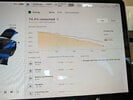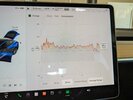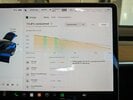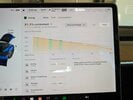Did not use maps, honestly just from memory (do we really remember how long we drive unless clocking it). Phoenix is just a widely spreadout open city, unlike most cities travel speeds are 50mph and usually only one or 2 red lights per mile at worst. So going 9 miles takes very little time. However, I found an interesting article from 2020 while searching google all this about tesla air-conditioner power usage - too bad I find nothing like this from tesla.
How do we find out how we are doing in any endeavor in a complex machine? The need is for specific performance data that allows an informed decision — at least, if we wish.

cleantechnica.com
This article conflicts with what the service center told me that the AC was single stage, this tech says it is variable speed, which means the temp setting is going more greatly impact the power used. A single stage is just on or off and always draws the "about" same power. Variable speeds do better with less demand.
some other blogs...
I did some tests today measuring the power & energy of the AC in very high temperatures. It was 106 / 41 today in Northridge, CA. It used a little over 1 kW to keep the car cool. Here is a short video about it. I also did some testing driving. While I didn't include that in the video, the energy...

teslamotorsclub.com
Curious as new Y model owner. I’ll be living in Florida next year. I was curious to know what’s the battery performance like when you’re consistently running your air conditioner? How long does the buttery last, and how often do you need to charge?

teslamotorsclub.com
None of these are anywhere close to my range problem. thy are talking :
"How much power does a Tesla AC compressor draw?
The compressor's power use can be only ~1 kW at low speed (4 range miles lost per hour) against up to 6 kW (24 lost miles of range per hour) with the compressor running very hard at full fan and at high compressor speed." My losses are much much more than those figures.
I will post more long range stats from my car with wh/mi etc..- hopefully tomorrow.








